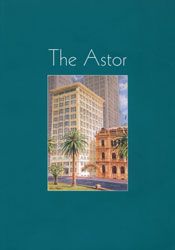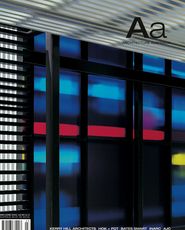DESIGN RESEARCH

Peter Downton. RMIT University Press, 2003. $27.50.
Is design research? Peter Downton thinks so and in this scholarly and philosophical work he argues the case, beginning with his first sentence: “design is a way of inquiring, a way of producing knowing and knowledge; this means it is a way of researching.” Downton allows that (roughly) whatever practitioners set out to know or learn in order to design, or discover through the process of designing, constitutes research. In this sense, Dustin Hoffman conducts extensive research – psychological, behavioural, anatomical – for and perhaps in many of his acting roles. This is a common use of the term “research”, and appropriate for analyzing practice (which is Downton’s aim), though it is much broader than the understanding of research in scientific or academic contexts where what is already known cannot be the object of research.
Downton acknowledges a distinction between research for design, research about design and research through design, and develops his argument accordingly. A chapter is devoted to each of the first two kinds of research, largely in support of his investigation of the third kind, which is the heart of his concern and includes the idea of the transmission of knowledge through designed objects. Downton takes a suitably broad view of knowledge and knowing. He recognizes the importance of “know-how” or skills, though I think he underestimates “knowledge by acquaintance” – that is, the kind of knowledge anyone who survives a heart attack (and can remember the experience) has but which many a world expert on heart attack does not, never having suffered one. The exclusive focus on knowledge, however, seems to me misplaced, and may be a product of the fact that the object of research in the narrower scientific or academic sense is the production of knowledge. Architecture embodies or reflects much more than knowledge: heroic values, borrowed ideas, metaphors, educated guesses, wishful thinking, and ignorance can all be there, and all can be the product of research or inquiry in Downton’s sense, as the social ambitions of architecture, for example, often amply demonstrate. Jeremy Bentham’s influential prescription for the prison as “a mill to grind rogues honest and idle men industrious” demonstrated the depths of nineteenth-century ignorance about the effects of incarceration, especially in such a place.
Design Research is aimed at practitioners, but is also clearly intended for academics and students, and should attract a diverse readership. Given its theoretical nature, more discussion of examples would help these readers. This is a stimulating and rewarding book, clear, approachable and well written, with judicious observations of design and how we think about it.
Greg Bamford
THE ASTOR

Jan Roberts (ed). Ruskin Rowe Press, 2003. $60.00.
It is timely that, with Sydney at the tail end of another apartment-building boom, a book has been published which scrutinizes one of the city’s finest and most influential blocks. The Astor is one of a handful of apartment blocks in Sydney that has reached star status. Unlike the notorious Blues Point Tower, or Aaron Bolot’s Wylde Street apartments, the Astor’s status derives in equal part from its architecture and the pedigree of its dwellers. This publication seeks to track the building’s career – its conception, reception, construction and legacy.
The Astor deftly places the building in the broader history of the making of the city of Sydney – its urban and cultural life and the story of its occupants. With incomparable views and a fishpond on the roof, the building was opened with great fanfare in 1923 by the NSW Premier, Sir George Fuller.
By virtue of its select group of tenants the Astor captured the imagination of the city.
Contributors Scott Robertson, Donald Ellsmore, Maisy Stapleton and Clive Lucas trace the significance of this building of firsts – largest reinforced concrete building in Australia when built, first clear importation of the New York/Chicago type upmarket apartment genre to Australia, and the tallest residential tower in Sydney until 1960 – in their chapters about the apartments’ construction history, chain of influences, interior plan and decor. These chapters provide a clear framework for the bulk of the book, which is largely anecdotal – the portraits and vignettes of the building’s occupants.
Together, the owners form a web of interests across the arts, sciences, business and medical professions. They include Barry Humphries, who clearly thought he was frowned upon by the matrons of the block; Major Rubin, millionaire and art lover; Lawrence Ennis, manager-in-chief of the Sydney Harbour Bridge; Sir Hugh Denison; and a group of progressive and feminist women including Portia Geach, Ruby Rich, Dame Edith Walker and Mary Alice Evatt.
These stories form a picture of the life and times of the city, the privileged existence of apartment living at its finest in the heart of the city, and the rural life that was the main abode of many who lived at the Astor.
What is missing is a chapter that places this apartment building in a broader context of apartment construction and living in Sydney. The Astor was the start of an extraordinary boom of large apartment buildings, such as Birtley Towers, Hillside, Borambil and the Macleay Regis. This highquality publication certainly whets the appetite for stories of the other grand dames of Sydney’s residential skyline.
Caroline Butler-Bowdon
Source

Archive
Published online: 1 May 2004
Words:
Greg Bamford,
Caroline Butler-Bowdon
Issue
Architecture Australia, May 2004














